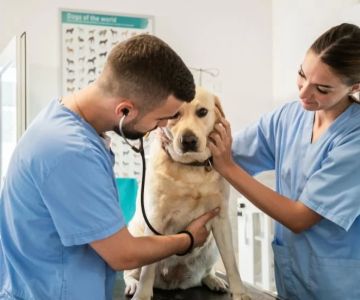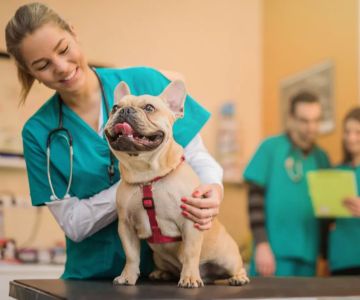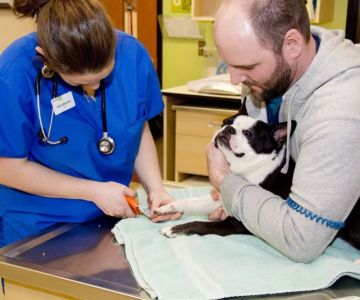What is a Veterinary Radiologist? Understanding Their Role in Animal Healthcare
- 1. The Role of a Veterinary Radiologist
- 2. Training and Education Required for a Veterinary Radiologist
- 3. Common Techniques and Equipment Used by Veterinary Radiologists
- 4. A Real-Life Case Study of a Veterinary Radiologist’s Impact
- 5. Why Veterinary Radiologists Are Crucial in Modern Veterinary Medicine
- 6. How to Find a Veterinary Radiologist for Your Pet
1. The Role of a Veterinary Radiologist
A veterinary radiologist is a specialized veterinarian who uses advanced imaging techniques to diagnose and treat injuries, illnesses, and abnormalities in animals. These professionals play an essential role in veterinary medicine, helping other veterinarians understand the underlying conditions of their patients through non-invasive imaging technologies. By interpreting X-rays, CT scans, MRIs, and ultrasounds, veterinary radiologists provide crucial insights that help guide treatment decisions and improve the overall care of animals.
Much like radiologists in human medicine, veterinary radiologists use imaging techniques to detect fractures, tumors, infections, and diseases affecting various organs. They work closely with other specialists to provide an accurate diagnosis, allowing for more effective and targeted treatments. Without the expertise of a veterinary radiologist, many conditions in pets would go undiagnosed until they become more severe, potentially putting animals at risk. Through their detailed work, veterinary radiologists enhance the quality of veterinary care and ensure that animals receive the appropriate interventions at the right time.
2. Training and Education Required for a Veterinary Radiologist
Becoming a veterinary radiologist requires extensive education and training. First, aspiring radiologists must complete a veterinary degree, which typically takes four years and includes coursework in animal anatomy, physiology, and pathology. After earning their veterinary degree, candidates must then complete a residency program in radiology, which can last from three to four years.
During this residency, veterinary radiologists receive specialized training in interpreting various imaging modalities, such as digital radiographs, MRI, CT scans, and ultrasonography. They also learn how to apply these tools to diagnose specific diseases in animals, ranging from small pets like dogs and cats to large animals like horses and livestock. Along with their formal education, many veterinary radiologists pursue board certification from organizations like the American College of Veterinary Radiology (ACVR) to further demonstrate their expertise.
Becoming a veterinary radiologist requires dedication, but the rewards are significant. These professionals are integral to ensuring that animals receive accurate diagnoses and appropriate care. Their work is often the backbone of treatment plans, making their role a vital part of veterinary teams across the country.
3. Common Techniques and Equipment Used by Veterinary Radiologists
Veterinary radiologists use a variety of techniques and equipment to perform imaging procedures. Some of the most common imaging methods include:
- X-rays: X-rays are one of the oldest and most widely used imaging techniques in veterinary radiology. They help detect fractures, tumors, and foreign objects in an animal's body.
- CT Scans (Computed Tomography): CT scans provide detailed cross-sectional images of the body and are particularly useful for detecting soft tissue abnormalities, such as tumors and internal injuries.
- MRIs (Magnetic Resonance Imaging): MRIs are used to capture detailed images of the brain, spinal cord, and soft tissues. This technology is particularly useful for diagnosing neurological conditions and injuries in animals.
- Ultrasound: Ultrasound is a non-invasive imaging method that uses sound waves to create images of internal organs. It's commonly used to diagnose heart conditions, abdominal issues, and pregnancy in animals.
In addition to these imaging techniques, veterinary radiologists use specialized software and diagnostic tools to enhance the clarity and detail of the images they obtain. For instance, they may use image enhancement tools to better identify abnormalities or to create 3D reconstructions of complex injuries. The combination of advanced technology and expert knowledge allows veterinary radiologists to make accurate diagnoses and provide valuable insights into an animal's health.
4. A Real-Life Case Study of a Veterinary Radiologist’s Impact
Consider the case of a dog named Max, who was experiencing chronic pain and lameness in his hind leg. His regular veterinarian conducted a physical exam but couldn’t pinpoint the cause of the issue. The veterinarian then referred Max to a veterinary radiologist, who performed a series of X-rays and discovered a small bone tumor in Max’s leg.
Thanks to the early detection made possible by the veterinary radiologist's imaging techniques, Max was able to undergo surgery to remove the tumor before it spread to other areas. The successful surgery allowed Max to recover fully, and he was able to return to his active lifestyle without the chronic pain he had been experiencing.
This case highlights the importance of veterinary radiologists in diagnosing conditions that may otherwise go undetected. Their expertise in using imaging technology allows for the identification of problems in their early stages, which can make a significant difference in the outcome of treatment and recovery for pets.
5. Why Veterinary Radiologists Are Crucial in Modern Veterinary Medicine
Veterinary radiologists play a critical role in animal healthcare by providing the detailed imaging required for diagnosing complex conditions. In many cases, these specialists are the first to detect serious issues, such as cancers, fractures, or infections, that might not be visible during a routine physical exam.
Furthermore, veterinary radiologists often work closely with specialists in other fields, such as orthopedic surgeons, cardiologists, and oncologists, to help develop targeted treatment plans. This collaborative approach ensures that animals receive the best possible care tailored to their unique needs. Their ability to offer precise diagnostics improves the overall outcomes of treatments and helps reduce the risk of complications in animals.
Their expertise also extends to preventing unnecessary surgeries or invasive procedures. For example, imaging techniques can reveal whether surgery is required or if a less invasive treatment approach, such as medication or physical therapy, would be more effective. This ability to provide clear answers makes veterinary radiologists indispensable to veterinary teams and the animals they care for.
6. How to Find a Veterinary Radiologist for Your Pet
If your pet requires the expertise of a veterinary radiologist, finding a qualified specialist is crucial to ensure accurate diagnostics and effective treatment. Start by asking your primary veterinarian for a referral. They often work closely with veterinary radiologists and can recommend trusted professionals in your area.
Alternatively, you can search online for board-certified veterinary radiologists through organizations such as the American College of Veterinary Radiology (ACVR). These specialists have undergone extensive training and certification, ensuring they meet high standards of expertise.
When choosing a veterinary radiologist, consider their experience, certifications, and reviews from other pet owners. It’s important to feel confident in their ability to provide the best care for your animal. Most veterinary radiologists are passionate about animals and strive to make the diagnostic process as comfortable and stress-free as possible for both pets and owners.
In conclusion, veterinary radiologists play an essential role in animal healthcare by offering precise, non-invasive diagnostic imaging. Their expertise helps detect and treat conditions that could otherwise go unnoticed, ultimately improving the health and well-being of pets. If your pet is experiencing symptoms that require advanced diagnostics, don't hesitate to consult a veterinary radiologist to ensure your furry friend gets the care they need.
SEO Title: What is a Veterinary Radiologist? Understanding Their Role in Animal Healthcare
SEO Keywords: veterinary radiologist, what is a veterinary radiologist, veterinary radiology, animal healthcare, veterinary imaging
SEO Description: Learn what a veterinary radiologist does, their role in diagnosing pet conditions, and how their advanced imaging techniques help improve animal healthcare. Find out how to locate a veterinary radiologist for your pet’s needs.









